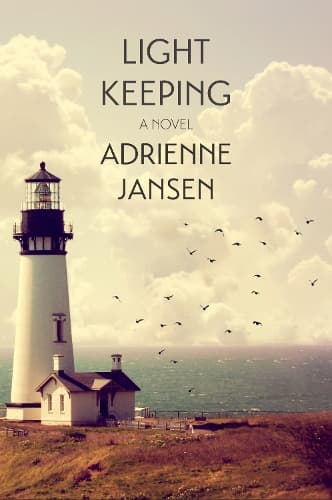Review: Light Keeping
Reviewed by Jessie Neilson
The lighthouse on the edge of the mainland has been there about 100 years, witness to shipwrecks, accidents and near misses. With walls made of iron squares and with big bolts, it looks to stand 100 more. Yet, as the home of Bill and Annie, lighthouse keepers, it will be one of impermanence. With government cost-cutting and general technological trends, their home, like others similar, is soon to be automated. No longer will boats be guided by the mortal eye, the human layer, behind the huge glass-panelled one.
For Bill, this is a time of great anger and sorrow. He must rouse others and advocate. However, there are other pressing factors in his and Annie's day-to-day lives, not least their young grandchildren, Jess and Robert. The four of them, after a terrible accident, form a family. The grandparents will do whatever they can to provide a safe and nurturing environment for these young people devastated by grief. Jess maintains a coping facade but for Robert, his hurt is buried inside. His new bedroom is his sanctuary, moroseness his only visible emotion.
Light Keeping is the sixth novel by Adrienne Jansen. An editor and poet, she established the Whitireia creative writing programme, allowing new voices to be heard. She became intrigued by lighthouses. Here, "light keeping" is an active, chosen role where those with skill and fortitude make themselves isolated lives. Their role is one of kaitiakitanga. For Bill, it allows him the role of storyteller too. He uses stories real, exaggerated and purely fiction to try to heal his grandchildren. In this way, one can try to make the world beautiful, full of hope and purpose.
Some of Bill's stories take us back to earlier generations where small, physical artefacts provide tenuous connection. Though they are mere hints of a former time, for this family they become significant features of identification and meaning. As well as stories and symbolic objects, there is the role of colour. Certain of the characters in the wider narrative live their lives to the fullest, embracing vibrancy. In this way they ensure that their existences and those around them are both joyous and worthy, especially important when living in such a bleak, windswept outpost. Dashes of this infectious mood help balance the more sombre atmosphere.
Jansen weaves an overarching story right through Robert and Jess's ruptured childhoods in the mid -1970s to the near present day. While the first sections of the book are mostly set during their childhood, in the latter pages the time frames jump around a lot more. This can be a little confusing, with more frequent chopping between time periods, which disrupts our concentration. However, through these time shifts we come to know about other family members, events and personalities, which have brought them to where they are now.
In the contemporary storyline, Jess and Robert are now aged around 50. We see how their lives have rolled out in the years following tragedy, what wreckages and triumphs gleam. Aspects of their respective personalities, bent by sorrow, have led them on different courses. Slowly Jansen feeds us titbits of their family history. With these siblings, she paints three-dimensional, solid characters, yet both are holding much back. Particular passions help them preserve sanity; for Jess, it is fixing old clocks and for Robert, it is creating precise architectural models.
Jansen's work is poignant. There is no getting away from the all too believable grief and we feel much sympathy for the plights of all our four. With an extensive and detailed narrative, it is easy to be drawn in. While it is light and colour that guides their days, it is up to them how they embrace this: whether they turn away, sinking into despondency, or draw in the positive and try to heal.
Reviewed by Jessie Neilson
